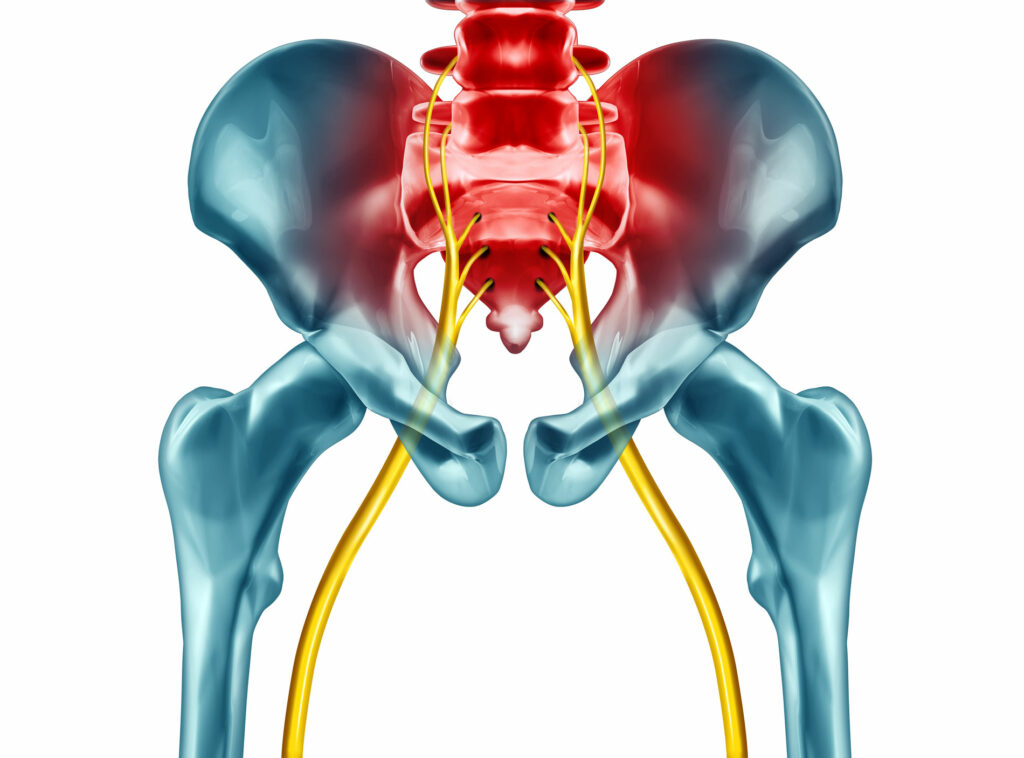 Sciatica is a debilitating condition that affects millions of people worldwide. Characterized by chronic pain radiating along the sciatic nerve, which runs from the lower back down through the hips and buttocks, sciatica can make simple daily activities challenging and negatively impact one’s quality of life. While there are various treatment options available, including medication and physical therapy, incorporating targeted exercises into your routine can significantly alleviate sciatica nerve pain and promote long-term relief.
Sciatica is a debilitating condition that affects millions of people worldwide. Characterized by chronic pain radiating along the sciatic nerve, which runs from the lower back down through the hips and buttocks, sciatica can make simple daily activities challenging and negatively impact one’s quality of life. While there are various treatment options available, including medication and physical therapy, incorporating targeted exercises into your routine can significantly alleviate sciatica nerve pain and promote long-term relief.
In this blog post, we will explore the top five exercises that can help relieve sciatica pain in the comfort of your own home. These exercises are designed to strengthen the muscles supporting the spine, improve flexibility, and reduce pressure on the sciatic nerve. However, it’s essential to consult with a healthcare professional or physical therapist before starting any exercise program, especially if you have persistent or severe pain, to ensure it is safe and suitable for your specific condition.
By incorporating these exercises into your daily routine, you can take an active role in managing your sciatica symptoms and promote healing and recovery. So let’s dive into the exercises that can provide much-needed pain relief and get you back on the path to a pain-free life.
If you would like professional help with sciatica pain, contact us for:
Pelvic Tilt
The pelvic tilt is a simple yet effective exercise that helps strengthen the core muscles and stabilize the lower back, reducing pressure on the sciatic nerve. Here’s how to perform it:
- Lie on your back with your knees bent and feet flat on the floor, hip-width apart.
- Slowly flatten your lower back against the floor by tightening your abdominal muscles and pressing your lower back down.
- Hold this position for 5-10 seconds, focusing on the gentle engagement of your core.
- Release and repeat the exercise 10-15 times, gradually increasing the duration of each hold.
Piriformis Stretch
The piriformis muscle, located deep in the buttocks, can contribute to sciatic nerve compression when tight or inflamed. Stretching the piriformis can help relieve pressure on the sciatic nerve. Follow these steps to perform the piriformis stretch:
- Sit on a chair or sturdy surface with both feet flat on the ground.
- Cross your affected leg over the opposite knee, creating a “figure-four” shape.
- Gently lean forward while keeping your back straight, feeling a stretch in your buttocks and outer hip.
- Hold the stretch for 20-30 seconds and repeat on the other side. Aim for 3-5 repetitions on each side.
Cat-Camel Stretch
- Start on all fours with your hands directly under your shoulders and your knees under your hips.
- Begin by arching your back upward, dropping your head and tucking your chin toward your chest (cat pose).
- Slowly transition to the camel pose by dropping your belly toward the floor, lifting your head, and arching your lower back.
- Move through these two poses, alternating between cat and camel, for 1-2 minutes, focusing on smooth and controlled movements.
Knee-to-Chest Stretch
The knee-to-chest stretch helps stretch the lower back, buttocks, and hips, promoting relaxation and relieving sciatic pain. Follow these steps to perform the exercise:
- Lie on your back with your legs extended.
- Slowly bring one knee toward your chest, using both hands to grasp your thigh just below the knee.
- Gently pull your knee closer to your chest until you feel a stretch in your buttocks and lower back.
- Hold the stretch for 20-30 seconds, then release and switch to the other leg. Repeat 3-5 times on each side.
Bird Dog Exercise
The bird dog exercise targets the core muscles, including the abdominal and lower back muscles, promoting stability and reducing strain on the sciatic nerve. Here’s how to perform it:
- Start on all fours with your hands directly under your shoulders and your knees under your hips.
- Engage your core muscles and extend one arm straight forward while simultaneously extending the opposite leg straight back.
- Keep your hips level and avoid arching your back.
- Hold this position for 5-10 seconds, then return to the starting position and switch sides. Repeat 10-15 times on each side.
Incorporating these top five exercises into your daily routine can be an effective way to alleviate sciatic nerve pain and promote healing. Remember to start slowly and listen to your body, gradually increasing the intensity and duration of the exercises as tolerated. If you experience any new or worsening pain, it’s crucial to consult with a healthcare professional for further evaluation and guidance. By taking an active role in managing your sciatica symptoms, you can improve your well-being and regain control over your daily activities.
Learn more about sciatica here.

